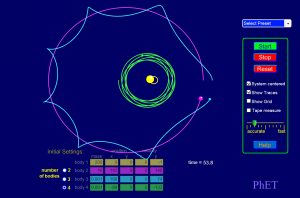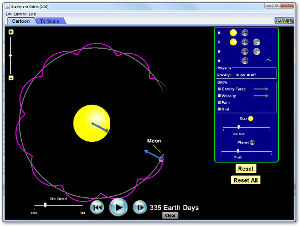- how Kepler's laws work
- why Tycho Brahe's work was important to Kepler
- how to use Kepler's law to figure out the length of a year on another planet
Thursday, August 29, 2013
Student Explanation
Using the materials available in the Voyages notebook, explain on a whiteboard:
Tuesday, August 27, 2013
Observing the Night Sky
The Motion of the Stars
A look at Light Pollution
Understanding Magnitude reading and reflection. Please read this and write a 2 paragraph summary (or 5-8 bullet points) on what this is about in your personal journal
A look at Light Pollution
Understanding Magnitude reading and reflection. Please read this and write a 2 paragraph summary (or 5-8 bullet points) on what this is about in your personal journal
Friday, August 23, 2013
Galileo's Dialogue
http://en.wikipedia.org/wiki/Dialogue_Concerning_the_Two_Chief_World_Systems
Three interpretations of the Galileo matter follow. These are views from radically different authors. The truth is in there somewhere on the three.
2. What kind of a person was Galileo?
3. We had just gotten done with the Black Death and the Plague. We had gotten civilization back to an even keel for the first time in history. Was the Catholic Church trying to make Galileo a scapegoat or was it protecting civilization from upheaval.
HOMEWORK. Read pp. 19 of the handout (Intro and Procedure) and go stargazing, following the ideas in #1, a and b. Take a toilet paper tube and look through the hole at three different constellations. Note the time, the constellation, and the number of stars.
Thursday, August 22, 2013
Seriously, NO. This won't happen.
Check out BAD ASTRONOMY when someone tells you something crazy in the world. Because not everything on the Web is true. You know that, right?
Like this.
Like this.
Wednesday, August 21, 2013
Cultural Astronomy
You are going to explore the lives of some famous astronomers. You will have ONE day to do this in class, so think carefully about your goals and how you divide and conquer. This will be handed in on MONDAY
You must find the following:
- are they heliocentric or geocentric?
- when is the time period in which they lived?
- was politics, religion, or science their realm of work?
- who paid for their work as astronomers?
- did they have access to telescopes?
- why do they matter?
First, check the book and summarize, including the page #. Then, confirm it with a web reference, and find a picture. Finally, create a Linoit or Google presentation that compares the similarities and differences of the astronomers.
You must include all the astronomers marked with a *, plus 2 others in your presentation, for a total of 8.
- Aristotle
- Galileo*
- Hipparchus
- Eratosthenes
- Tycho Brahe*
- Pope Gregory*
- Copernicus*
- Kepler*
- Newton*
- Ptolemy
- Einstein
- Hawking
- Annie Cannon
- Van Allen
Tuesday, August 20, 2013
Pseudoscience vs. Science, Kepler's Laws
Chunk the reading found at http://www.stephenjaygould.org/library/gould_noma.html into pieces...so everyone at your table is reading 4 to 5 paragraphs. When you get done, use a whiteboard to discuss the following questions:
a) what is science?
b) what is religion?
c) what is the theory of non-overlapping magisterium?
d) what would we call the overlap of science and religion?
e) which of the three ideas (science, pseudoscience, religion) were shown by the first astronomers?
f) can atheism be a religion?
Take a look at questions 1-10.
Read about Kepler's Laws and the Law of Universal Gravitation.
How can I use this simulation to 'prove' Kepler's third law (oops---you may have to look it up. :-)
 |
Friday, August 16, 2013
Astronomy
Day 1: What is Astronomy?
- Watch the video. Write 3 questions about what you see. Carl Sagan is a critical friend to astronomy, who helped popularize it in the last half of the 20th century.
- Spend 25 minutes looking at the presentation that is published. Take notes and be prepared to discuss things you DO and DO NOT understand.
- You will be given a copy of skymaps, with a Northern, Equatorial, and Southern projection. On each of them, find
- The Ecliptic
- Orion
- Sagittarius
- Ursa Major
- Ursa Minor
- Casseiopeia
- Cepheus
- Draco
- Polaris
- Vega
- Cygnus
- Bootes
This information comes from my World Almanac. The distance to the main stars of the Big Dipper ranges from about 68 light-years (ly) to about 210 light-years, as shown here:
210 ly -- > * * < -- 88 ly
* < -- 68 ly
* * < -- 105 ly
90 ly -- > * * < -- 78 ly
Most of these stars do actually belong to a single open star cluster (I don't think the 210 ly one belongs, though). The stars of a given constellation need not have any physical relationship to each other. They may be vast distances apart; we simply associate them because they happen to be in the same general direction, from our viewpoint.
Subscribe to:
Comments (Atom)
